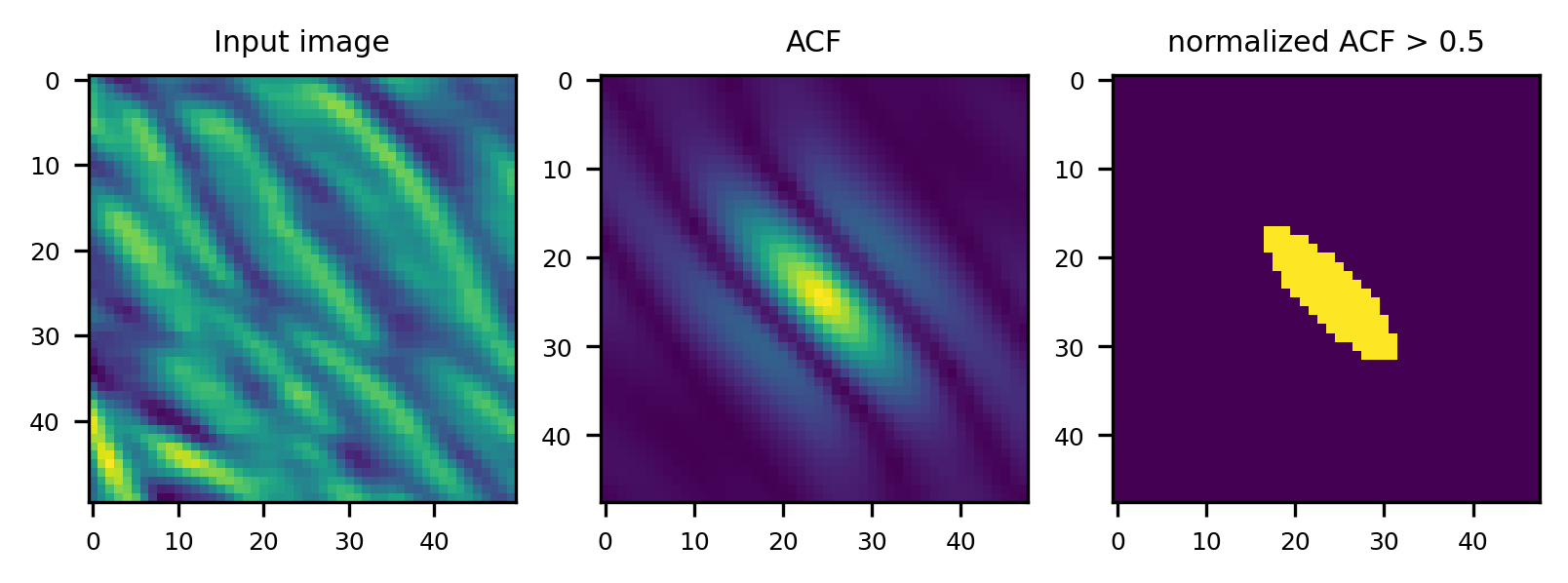Fabric tensor from 3D images.
pyfabric extracts the local fabric tensor from 3D image data. pyfabric computes the 3D spatial Auto Correlation Function (ACF) to extract the local orientation and anisotropy of images.
The ACF of an image I is computed in the Fourier domain as:
ACF = |IFFT(FFT(I) conj(FFT(I)))|
with FFT() and IFFT() being the discrete Fourier and discrete inverse Fourier transforms of the image I, respectively [1] [2] [3].
After this step, the ACF is segmented and an ellipsoid is fitted to its contour. The fabric tensor is obtained from the eigenvalues and eigenvectors of this ellipsoid.
For a detailed explanation of the method see the notebook pyfabric_demo
To view the help type
python pyfabric.py -h
Extract fabric information from an image I:
evecs, radii, evals, fabric_tensor_components, degree_anisotropy = pyfabric.fabric(I)
[1] P. Varga et al., “Investigation of the three-dimensional orientation of mineralized collagen fibrils in human lamellar bone using synchrotron X-ray phase nano-tomography,” Acta Biomaterialia, vol. 9, no. 9, pp. 8118–8127, Sep. 2013, doi: 10.1016/j.actbio.2013.05.015.
[2] M. J. Wald, B. Vasilic, P. K. Saha, and F. W. Wehrli, “Study of trabecular bone microstructure using spatial autocorrelation analysis,” in Medical Imaging 2005: Physiology, Function, and Structure from Medical Images, Apr. 2005, vol. 5746, pp. 291–302. doi: 10.1117/12.596133.
[3] P. Varga and P. K. Zysset, “Assessment of volume fraction and fabric in the distal radius using HR-pQCT,” Bone, vol. 45, no. 5, pp. 909–917, Nov. 2009, doi: 10.1016/j.bone.2009.07.001.
